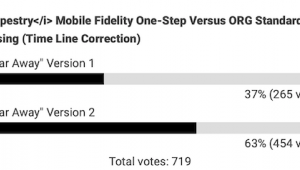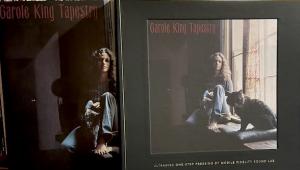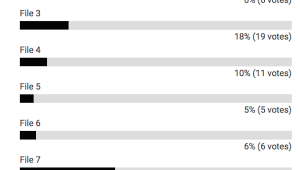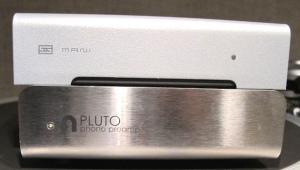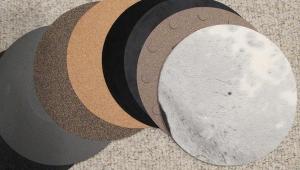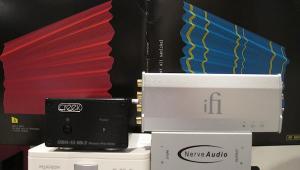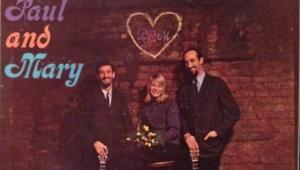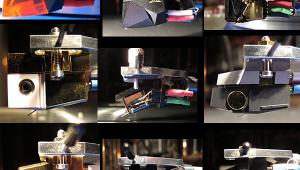28%
Primary tabs
Analog to Digital Converter Shootout: Which Sounds Best? (All Files Now Corrected and Available)

Here’s your opportunity to compare ADCs (analog to digital converters) priced from $300 to $3995. They offer a wide range of features and enhancements that will be discussed in the reviews to be posted shortly.
Meanwhile, below are seven 96/24 files produced by five A/D converters. Why seven from five converters? One, the M2TECH Joplin offers a choice of 96/24 or 96/32 resolution (it can also do the conversion at 384/32 resolution but for the purposes of this shoot out we’re sticking with 96kHz).
Of course, though the conversion is at 96/32 the files are both 96/24 but it would be interesting to hear if recording at a higher bit rate and decimating it to 24 bits sounds better or worse than the one converted directly to 96/24.Two files were created using the Lynx Hilo but using different recording chains as described below.
So, what you will be hearing is a three minute excerpt from Vanish an upcoming Yarlung Records release by the percussion group Smoke & Mirrors, used with permission. The record was produced from an analog master tape. The image here is from the DSD version recorded simultaneously using that format.
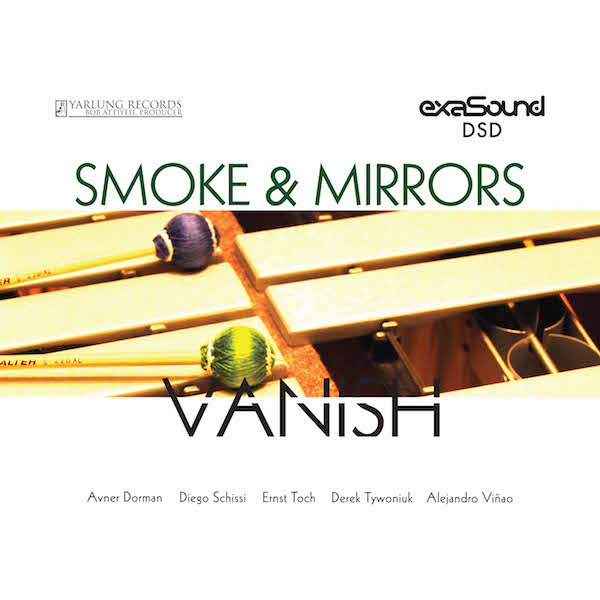
The recordings were made using the Continuum Caliburn turntable and Ortofon’s new A95 cartridge mounted on the Continuum Cobra tone arm. The Ypsilon VPS 100 phono preamp and 10L step up transformer was used for six of the seven files. Vinyl Studio software for Mac recorded those six. The USB cable was WireWorld’s Platinum Starlight, while the Lynx Hilo connected via an Apple Thunderbolt cable. Do USB cables really make a difference? Perhaps in the near future we’ll test that with downloadable files.
One of the files was created using Channel D’s Seta® PIccola battery powered phono preamplifier sending a “flat” (no RIAA equalization) signal to the Lynx Hilo A/D converter and recorded using Channel D’s Pure Music software, with RIAA applied in the digital domain. So two of the files use the same converter but very different chains.
Lowest to highest price, the A/D converters are the HRT Linestreamer+, ($299.95), the P.S. Audio NuWave Phono Converter ($1,899), the Channel D Seta Piccola ($1,899, or $2098 as supplied including optional RIAA module), the M2TECH Joplin ($2,499), the Lynx Hilo ($2499) and the Ayre QA-9 ($3995).
These units have a wide range of operating features. For instance the P.S. Audio includes a built-in MM/MC phono preamplifier, two earlier versions of which was previously reviewed by analogplanet. The M2TECH includes a MM phono preamplifier as well as a variety of EQ curves. The Lynx Hilo is a pro audio product that’s both an A/D and D/A converter. Some of these units are DSD capable but more about that in the capsule reviews coming up.
We chose PCM over DSD because more readers probably have PCM DACs. So here are the seven files. Please listen and vote. These are large files and will take some time to download depending upon the speed of your internet connection.
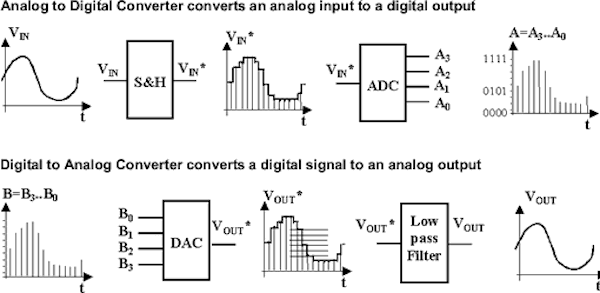
- Log in or register to post comments


discern the differences in the DACs, if any exist, as your rig is static. Nothing is changing but the software we are playing. I find this a valid test or my ability to discern small differences. A real high quality rig with greater resolution should make it easier.

I've been looking for a way to narrow mu choice of ADC and I appreciate Michael taking the time to create and share the files.
The files were loaded onto my Pono Player with the line-out to a Samuels "The Hornet" portable amp. Alternating between audio-technics ATH-M50 and Sennheiser HD-595 headphones. Not a high-end setup but good enough that each version sounds different to me, with File #5 being my favorite. I'm anxious to matchup the ADC with each file hoping my preference isn't outside my budget.
Some background hum is noticeable, and with the exception of File #6, it's not too objectionable.
BTW - Not having heard the music before It did take a while to acclimate to the sound before the differences became apparent and preferences emerged.

If you were designing an A/D this type of test would be quite useful. Comparing users' responses to both your own and competitors' equipment based on the users' own biases (i.e., their own systems and ears) and having a trend develop, or seeing the lack of a trend, can imply whether the design decisions are worth the cost. As a consumer it can inform a decision regarding the cost of components. A worthwhile test that is worth the considerable effort. Thank you Michael.

File 1 and 4 have their channels flipped for me. File 4 had a lot more hum. I'm downloading File 2 now.
It would be cool if you threw in a home studio interface, something like an Apogee Duet or Focusrite Forte. My vinyl rig is now straight into a Forte then uses PureVinyl for equalization. I like it a lot.

Looking forward to your results and discovering which file came from each device.
When you write your followup review, can you please offer a distinction between the Ayre-QA9 and its PRO model? I'm finding it difficult to reconcile the benefits of the additional RAW DSD output board and WORD clock.

I think the comparo is a fun and "fascinating" critical listening exercise. I used this an opportunity to use some of the descriptive lingo that I have sponged from all the wonderful audio writers that have entertained and enlightened me over the last 35 years. Obviously I couldn't eliminate the d/a conversion when listening, but I was able to stay digital until the amplifier stage (computer/jriver/deqx/coax spdif to 3x nuforce dda-100 amps/triamped 3way homebrew OB speakers). I preferred #5--almost liquid like smoothness without sacrificing dynamics or clarity. I enjoyed #7 & #3 next best and in that order. Next came #2, #1 OK. Rounding it out was #4 & #6 with #6 being almost unlistenable on my system, seemed bright an edgy. Thanks much Michael for all the time and effort you put into these comparos. Longtime reader/listener, first time responder. Keep up the good work and "don't let the bastards get you down!" Please accept the above hommage to the recently departed with the best "ears" of us all.

Forgive my ignorance in this obviously sophisticated discussion. I have hundreds of classical LPs that I want to eventually convert to digital files. I thought the standard was to get a USB turntable, shoot the output directly to the computer and use that to convert to whatever file format (FLAC, monkey audio, etc) that you wanted. There was a very interesting discussion in one of the record (or whatever they're called today)review magazines by their house physicist that indicated 96/24 was as good as it gets to the human ear; but it didn't go into the actual process. Is there someplace I can find an elementary discussion on the conversion options - both hardware and software?

I'd love to see this comparison extended to cheaper ADC, such as the one in iPhones, the one accessed by the old 30-pin connector, the ones in selected Macs and Dells, the old but common Behringer UCA202.

Hi
Where is the list for which files are which converters? I'm in the market for converters thats why its very important! haha
Pages
- « first
- ‹ previous
- 1
- 2
- 3



